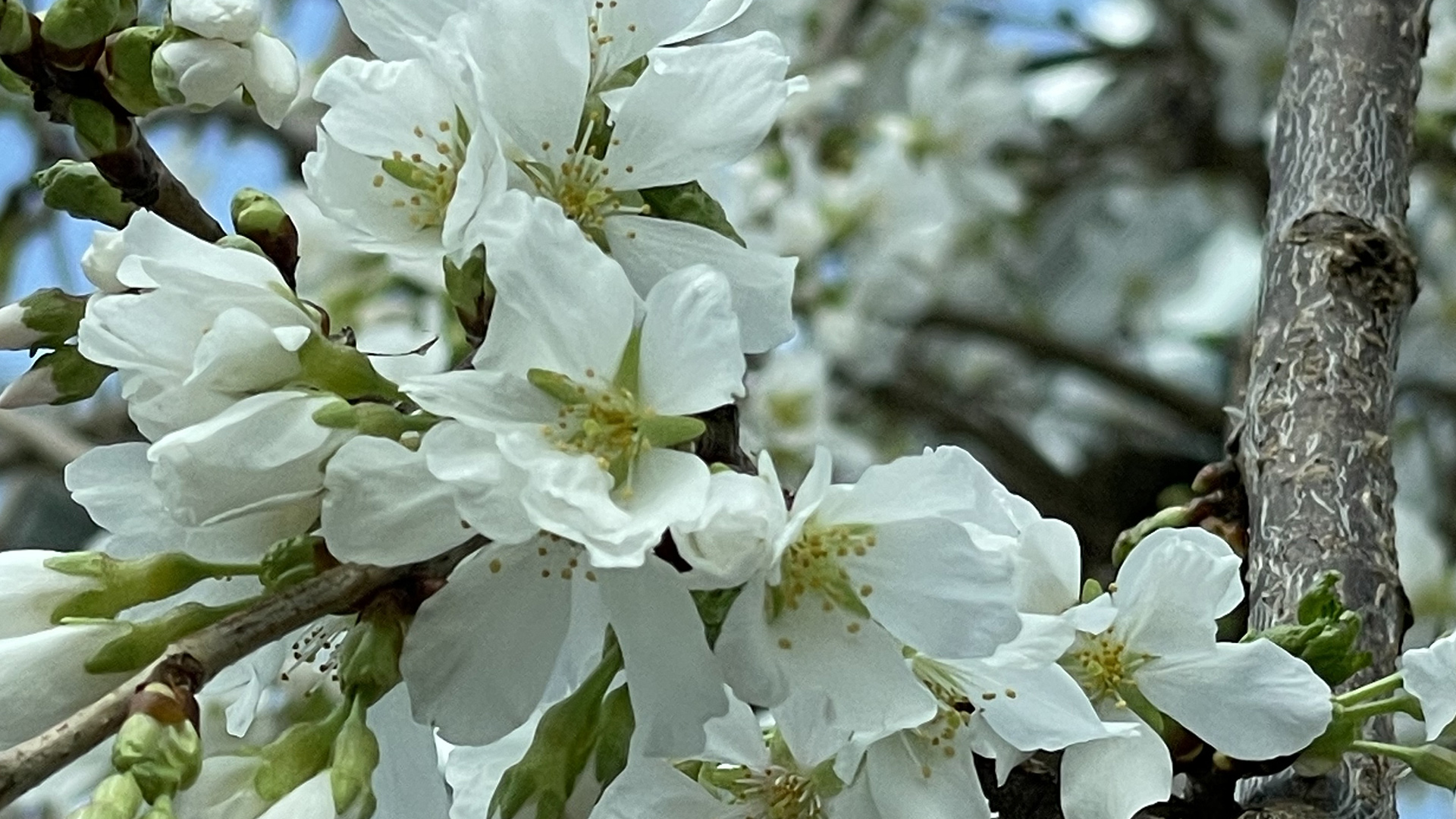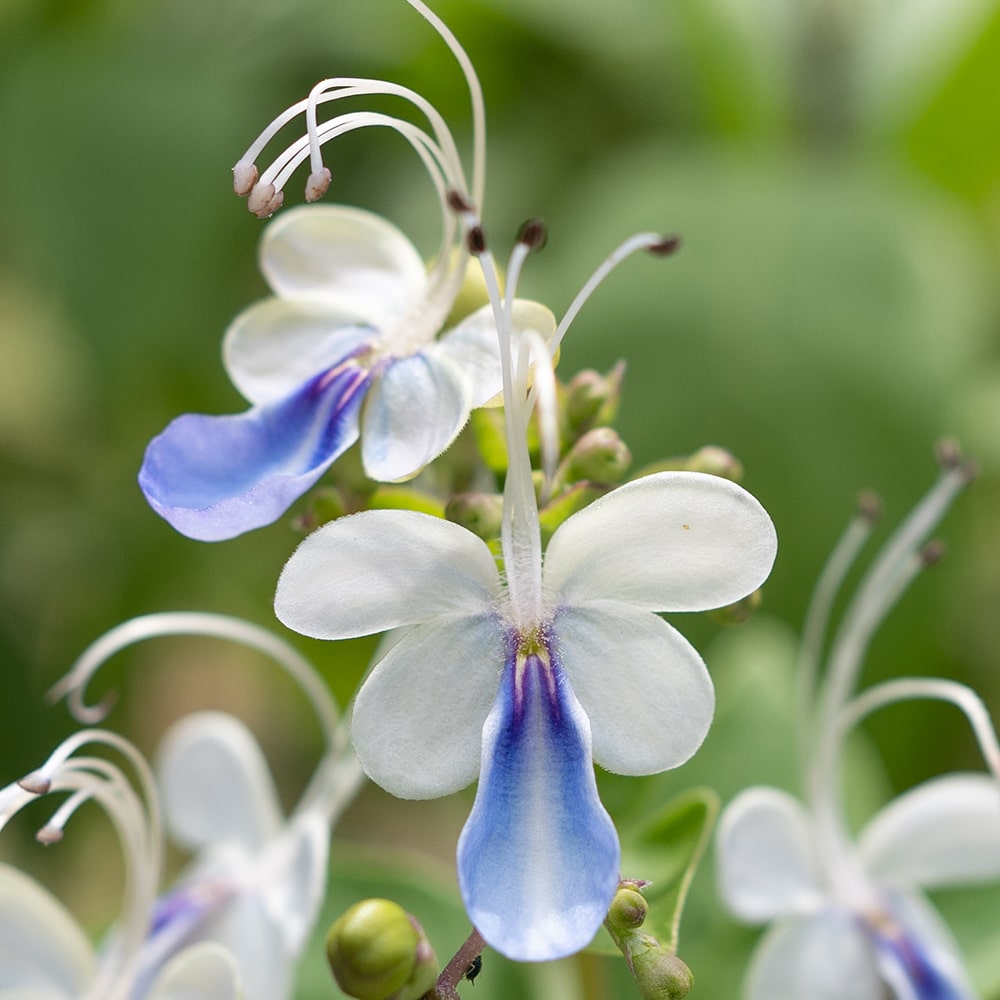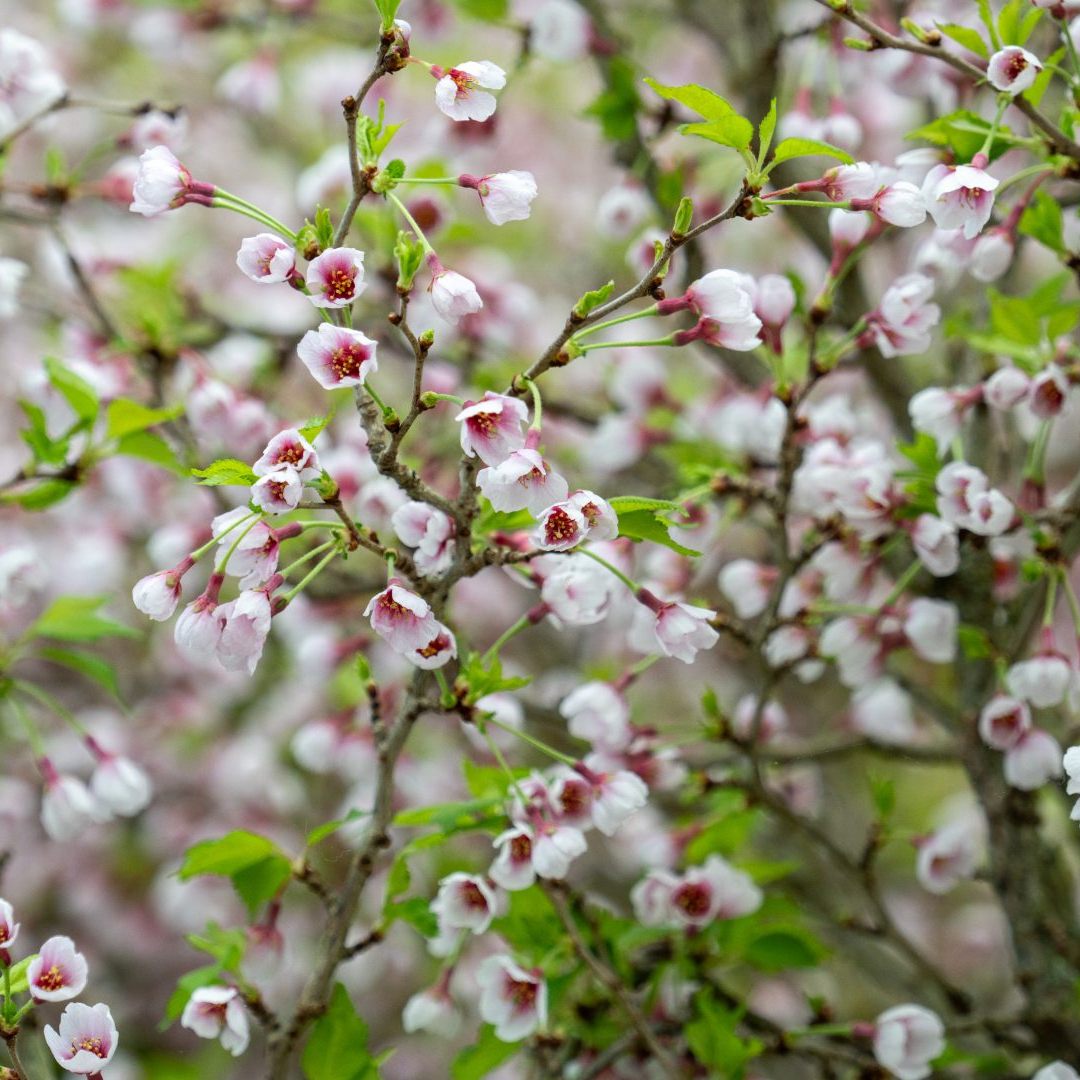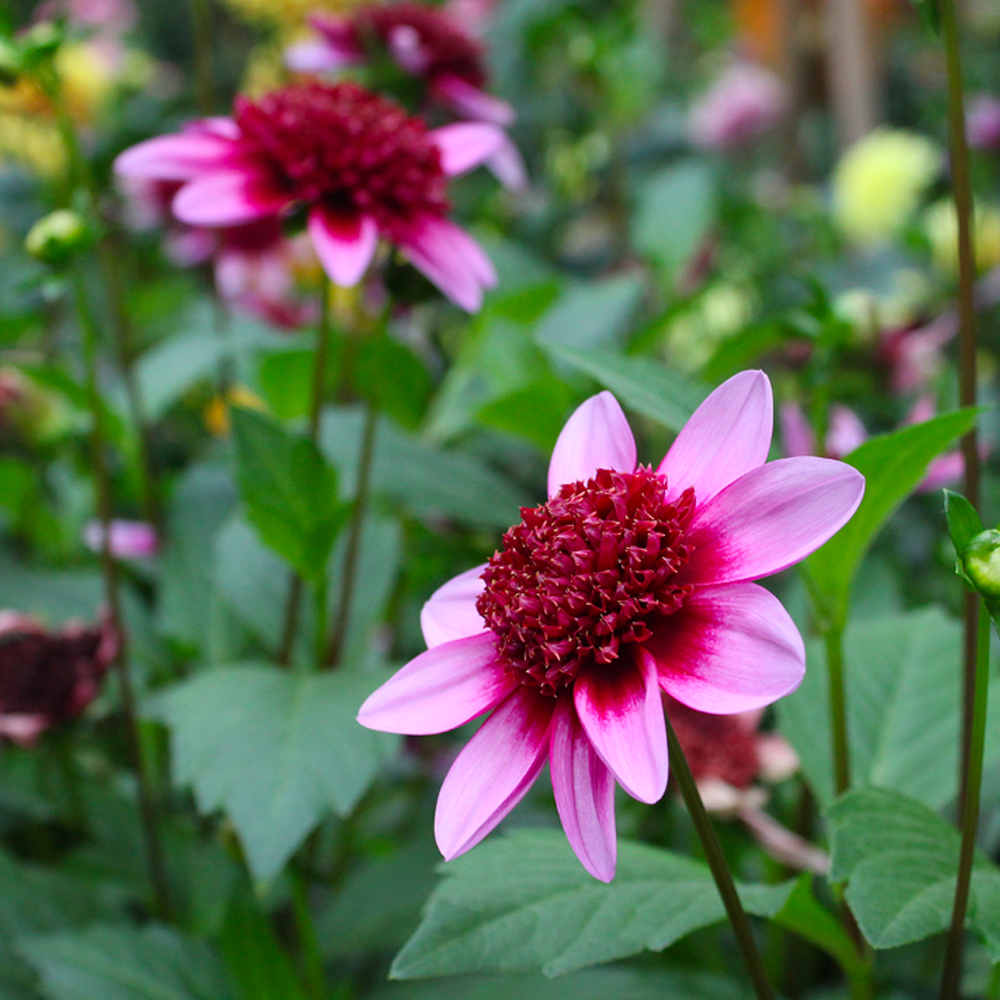Dodder Laurel (Cassytha filiformis)
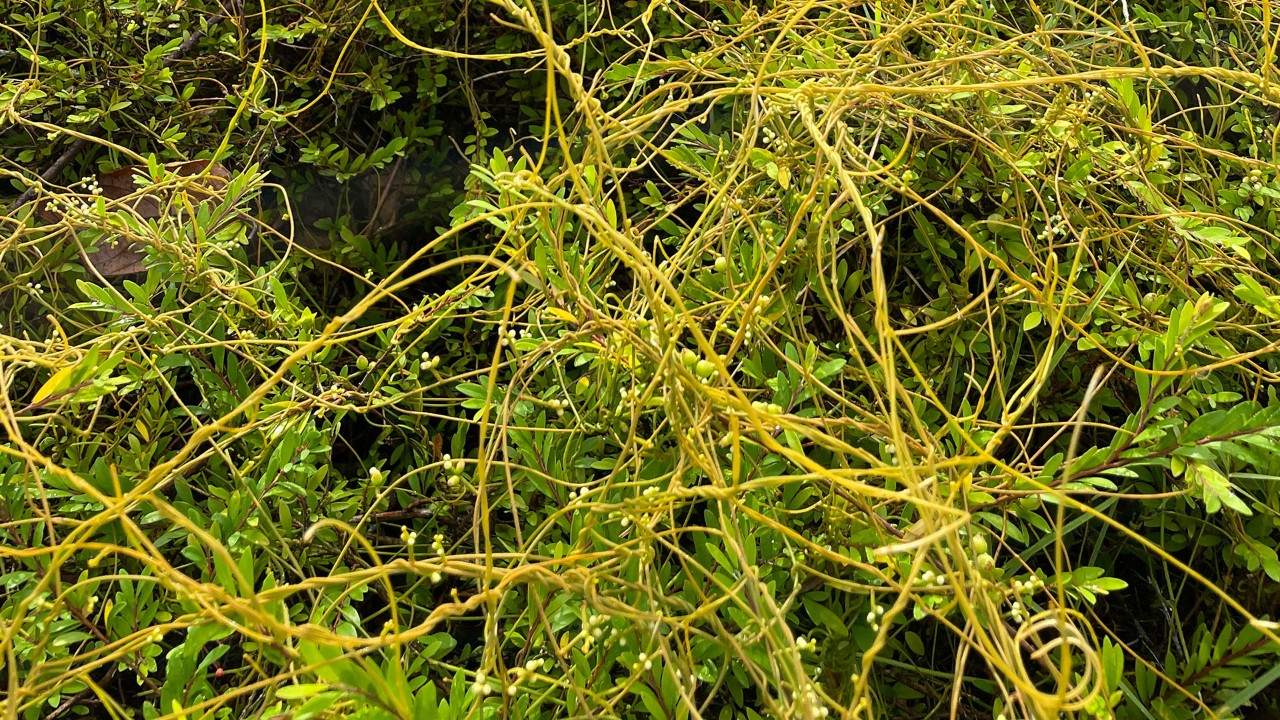
Is this a tangle of twine flung into the bushes by a class of frustrated macrame plant hanger students? A panful of heavily sauced pesto pasta that landed in a planter bed after a careless caterer tripped and fell?
Nope, these are the bountiful, twining stems of the parasitic dodder laurel (Cassytha filiformis) happily growing over and into the stems of its host plant, in this case a bed of the mousetail plant (Phyllanthus myrtifolius)! I was delighted to find this uncommon and usually unliked parasitic weed growing in an area cordoned off for renovation and only recently opened back up.
Native to the global tropics, dodder laurel is an herbaceous member of the laurel family (Lauraceae), which also includes economically important plants including avocado and cinnamon. Unlike all its relatives, the 26 members of the genus Cassytha, deriving from kesatha, Aramaic for ‘a wisp of hair’, have minute, scale-like leaves and little or no roots at maturity. Instead, it derives its nutrition by photosynthesizing through green stems or siphoning water and nutrients from its host plants.
In a fascinating example of convergent evolution, Cassytha species look almost identical to dodder (Cuscuta spp.), similarly parasitic members of the morning glory family (Convolvulaceae), and can be almost impossible to tell apart until the plant flowers and fruits. Cassytha species produce flowers in spikes or racemes and fleshy, single-seeded berries, whereas Cuscuta species have clustered flowers and dry, capsule fruits with two to four seeds.
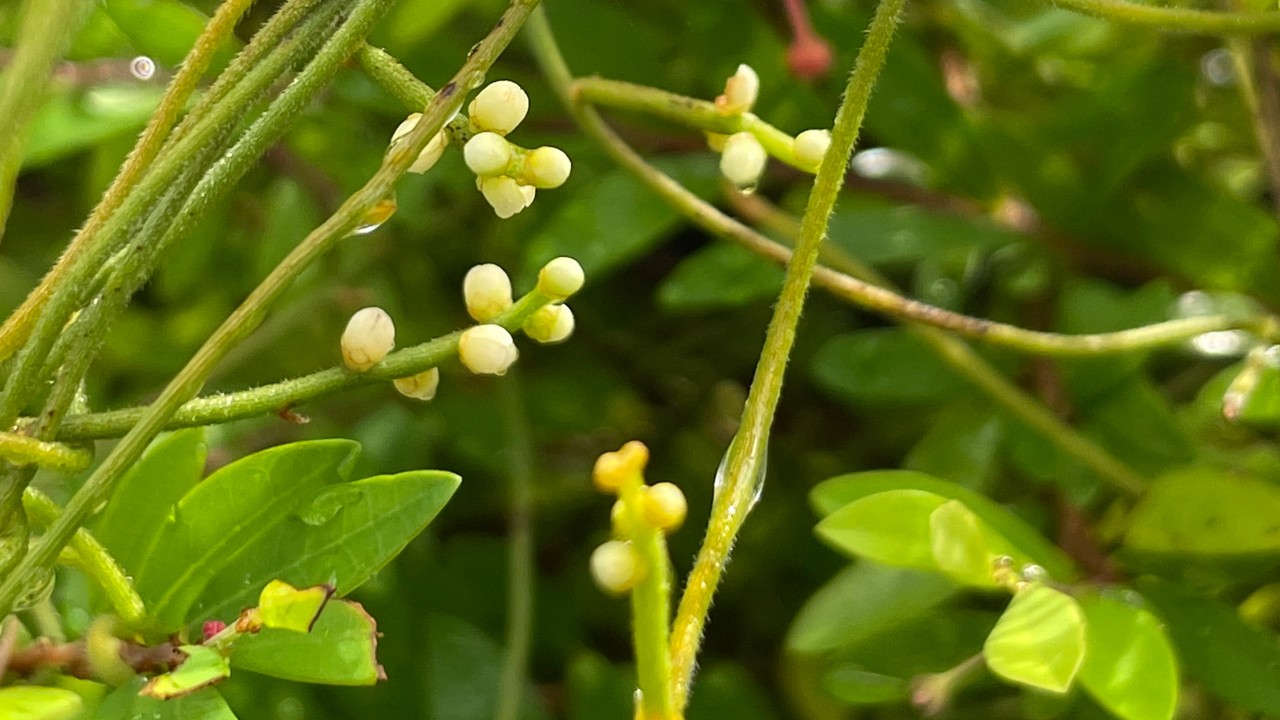
Dodder laurel produces minute white flowers on little spikes. Also note the green photosynthetic young stems and the older orange parasitic stems.
Growing from seed, a dodder laurel seedling produces a weak primary root which quickly dies off, followed by several adventitious roots growing from its stem. A young, green, photosynthetic seedling can survive up to 8 weeks on its own while growing a stem up to 30cm long to search for a nearby host plant. Once it has found a host plant, it attaches and penetrates the host plants stems by means of haustoria – root-like structures that enter the host plant’s cell walls and take up sugars, minerals, and water.
Most common in coastal areas, dodder laurel is often found on coastal plants like sea lettuce (Scaevola taccada) but can parasitize a wide range of host plants from ferns to grasses, trees and shrubs, often parasitizing many species simultaneously, depending on what plants are growing nearby. An individual dodder laurel stem can grow over 6 m long and tangled mats of dodder laurel can kill their host plants and even trees by blocking out sunlight, steaking too much nutrients from its host, or passing on plant pathogens. Young stems are often green and photosynthetic, but once well-established on the host plant, the stems turn orange and are fully parasitic and dependent on nutrition from a host. Plentiful rain can stimulate dodder laurel to flower. The fruits--small, round fleshy berries are eaten by birds which defecate the seeds elsewhere for the cycle to begin again.
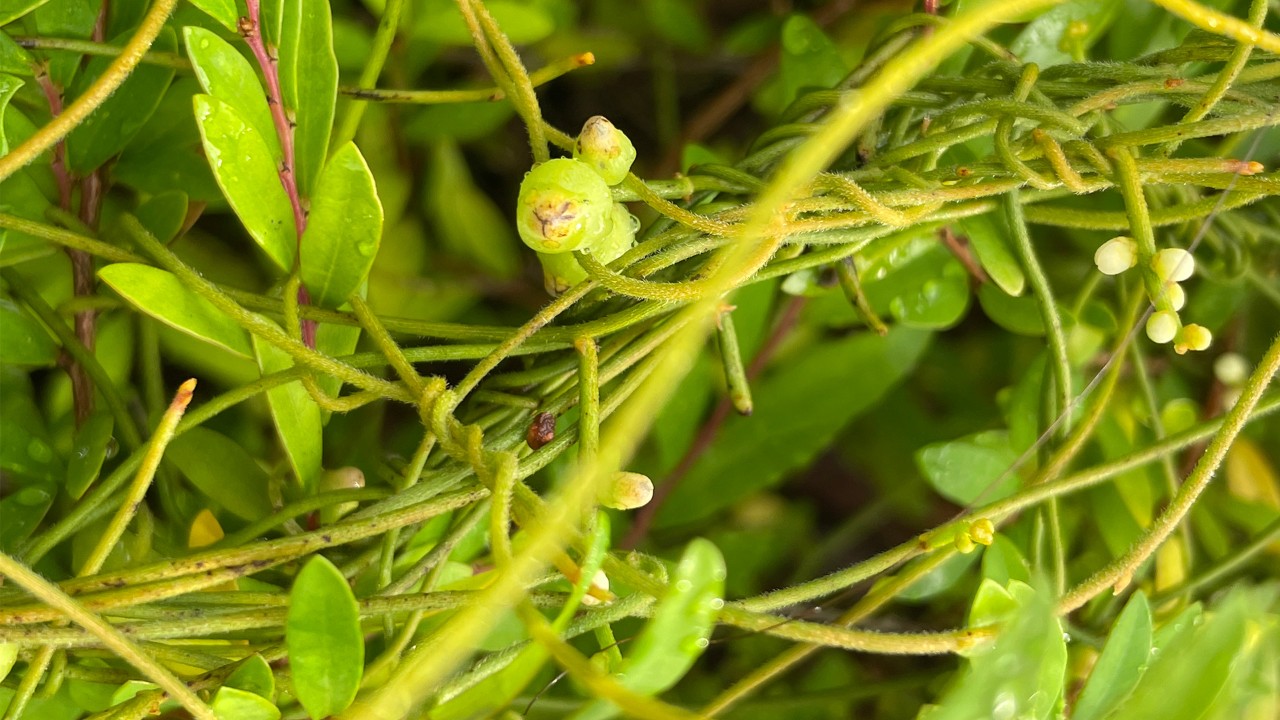 Dodder laurel fruits are small, round single-seeded berries maturing from green to white.
Dodder laurel fruits are small, round single-seeded berries maturing from green to white.
Look for this beautiful but deadly parasite plant in a border bed of mousetail plant (Phyllanthus myrtifolius) near to the Bayfront Pavilion and the Meadow Bridge before our horticultural team weeds it out!
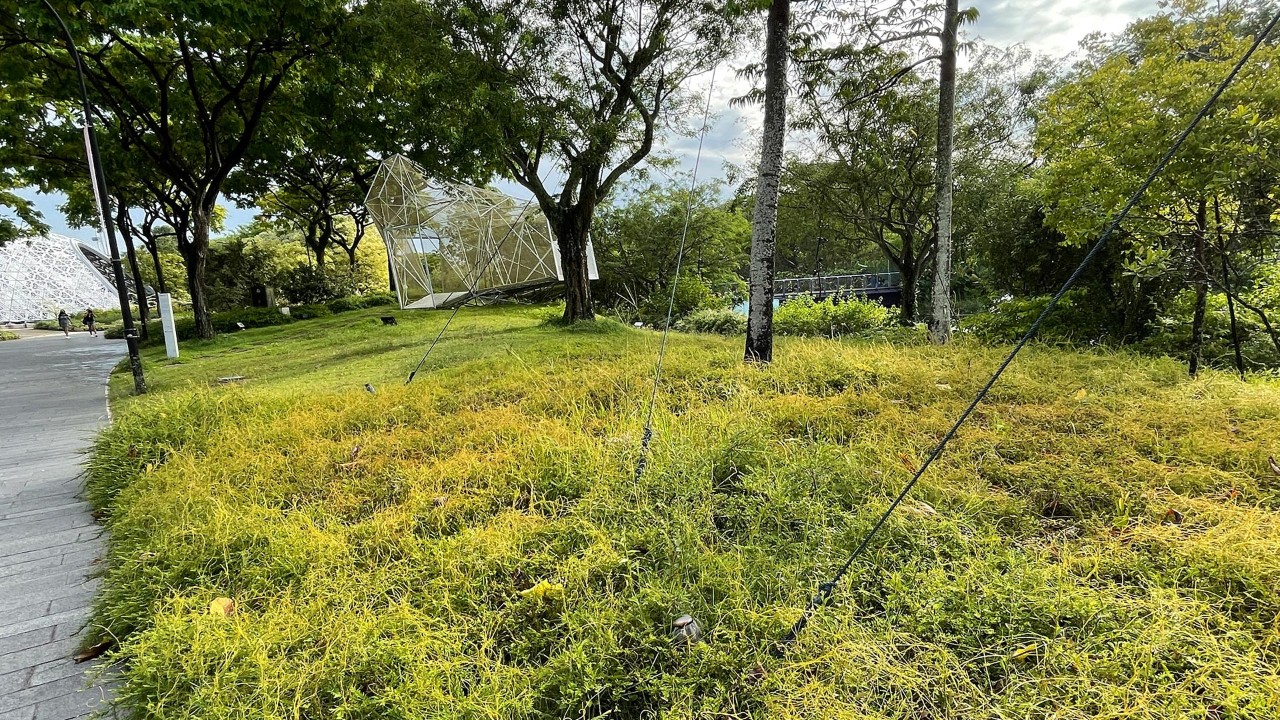
Written by: Janelle Jung, Senior Researcher (Research and Horticulture)
A transplanted pake (Hawai'i-born Chinese), she's finding her own Singaporean roots. Every plant has a story, and Janelle helps discover and share these with colleagues and guests, hoping to spark a mutual plant passion! Ask her what plant she named her cat after!
